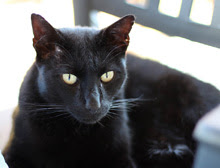A stone wall in the Dordogne, April 2006. Taken in with the Lumix camera in .jpg format, now reprocessed with Photoshop 13.
Since moving into manual mode, I've more or less abandoned the .jpg format in favor of raw images. I still save to .jpg for publishing, but not until I've done the post-processing of the raw image. I'm far from being good at it, but I'm trying to improve. When I first got into photography back in the late '80s, I was using 35mm slide film and trying to learn priority modes (aperture vs. shutter) without ever really going into full manual. And since then, post-processing software (like Photoshop and Lightroom) has really changed the way I look at photos. So here I am, nearly thirty years later, film long gone in favor of digital, still trying to learn and improve. Life is a cabernet, ol' chum.







Back when... the film was developed and after 36 exposures and two holidays it was touch and go if I could remember who/what/where. Now I snap and can load into Picasa and view straight away, but I can't remember how to print the odd one that I want (nor how to get email photos sent to me into Picasa) It's time like these that I need a 10yr old to sort me out.
ReplyDeleteMy first digital. purchased in 2000; was a Nikon Coolpix 880. I never learned all its features (many which were sadly wasted on me and which you would have perfected), but I was still amazed at what I could produce.
ReplyDeleteI love all the textures and shadows in the stone wall, especially in contrast to the soft haziness of the forest in the background.
ReplyDeleteA cabernet, for sure!
ReplyDeleteWe never get it done, eh?
ReplyDeleteWhat is your photo, since it is not .jpg? I don't really know much about the manual photo-taking, digitally, and what you mean by the "raw photo". :)
ReplyDeleteJudith, some cameras allow you to select RAW... that is all the data for each pixel on the sensor... it results in a large file that when viewed initially appears rather "flat".
DeleteThe .JPG file is smaller because it is both compressed... and enhanced to appear sharper and brighter. RAW is exactly what it says it is... raw data. BUT, from that raw data, you can alter the picture in Lightroom & Photoshop to get a result that is closer to what you saw than the artificially created .JPG file.
Lightroom is so named because it is the digital version of an old analogue darkroom with developing and fixing chemicals... but without the poison and the fumes... and you can save your digital "developers" so that you can achieve the same results again and again with similar pictures...
and, like a negative, you never lose the original data because you never over-write the original.
Hope that helps...
Thanks. I didn't know any of that. And thanks to Judith for asking.
DeleteThis makes me want to go learn more about the digital photo process.
The waall seems old
ReplyDeletepotty, in the film days, you had to make notes of what we now call the "meta data" so you could remember the camera settings for each shot. Way too much trouble for me. Digital has changed almost everything.
ReplyDeletemitch, I certainly don't use all the features, especially in the post-processing software. I'm only a human, after all.
wilma, right?! :)
evelyn, and often a gamay... ;P
jon, thank goodness for wine.
judy, what Tim said. Also, RAW photos are huge, so you need a lot of storage space. RAW images are analogous to exposed film in that they have to be "developed" with software in order to be usable. But the control you get in the developing is what makes them interesting. Otherwise, you're letting the camera do the developing automatically when they produce .jpg images, and cameras really do a good job of that, especially recent cameras. Still, some of us are control freaks!
emm, have fun!
gosia, I don't know how old it is, but it does look like it's been around for a while.
Camera settings! I think it was slide a ( yellow) filter across if it were sunny.
ReplyDelete